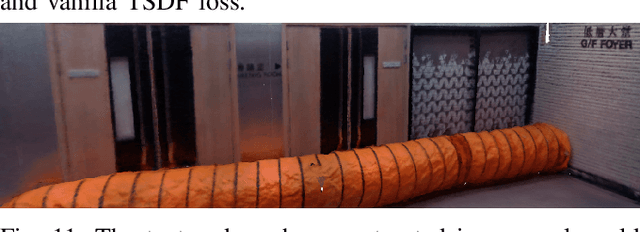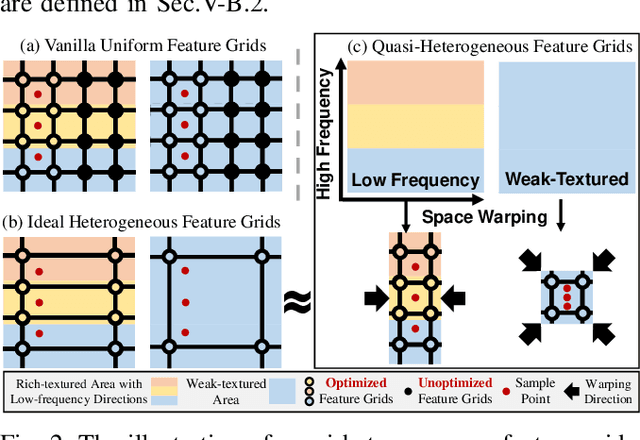Yiming Luo
USO: Unified Style and Subject-Driven Generation via Disentangled and Reward Learning
Aug 26, 2025Abstract:Existing literature typically treats style-driven and subject-driven generation as two disjoint tasks: the former prioritizes stylistic similarity, whereas the latter insists on subject consistency, resulting in an apparent antagonism. We argue that both objectives can be unified under a single framework because they ultimately concern the disentanglement and re-composition of content and style, a long-standing theme in style-driven research. To this end, we present USO, a Unified Style-Subject Optimized customization model. First, we construct a large-scale triplet dataset consisting of content images, style images, and their corresponding stylized content images. Second, we introduce a disentangled learning scheme that simultaneously aligns style features and disentangles content from style through two complementary objectives, style-alignment training and content-style disentanglement training. Third, we incorporate a style reward-learning paradigm denoted as SRL to further enhance the model's performance. Finally, we release USO-Bench, the first benchmark that jointly evaluates style similarity and subject fidelity across multiple metrics. Extensive experiments demonstrate that USO achieves state-of-the-art performance among open-source models along both dimensions of subject consistency and style similarity. Code and model: https://github.com/bytedance/USO
Back to Fundamentals: Low-Level Visual Features Guided Progressive Token Pruning
Apr 25, 2025Abstract:Vision Transformers (ViTs) excel in semantic segmentation but demand significant computation, posing challenges for deployment on resource-constrained devices. Existing token pruning methods often overlook fundamental visual data characteristics. This study introduces 'LVTP', a progressive token pruning framework guided by multi-scale Tsallis entropy and low-level visual features with twice clustering. It integrates high-level semantics and basic visual attributes for precise segmentation. A novel dynamic scoring mechanism using multi-scale Tsallis entropy weighting overcomes limitations of traditional single-parameter entropy. The framework also incorporates low-level feature analysis to preserve critical edge information while optimizing computational cost. As a plug-and-play module, it requires no architectural changes or additional training. Evaluations across multiple datasets show 20%-45% computational reductions with negligible performance loss, outperforming existing methods in balancing cost and accuracy, especially in complex edge regions.
DreamO: A Unified Framework for Image Customization
Apr 23, 2025Abstract:Recently, extensive research on image customization (e.g., identity, subject, style, background, etc.) demonstrates strong customization capabilities in large-scale generative models. However, most approaches are designed for specific tasks, restricting their generalizability to combine different types of condition. Developing a unified framework for image customization remains an open challenge. In this paper, we present DreamO, an image customization framework designed to support a wide range of tasks while facilitating seamless integration of multiple conditions. Specifically, DreamO utilizes a diffusion transformer (DiT) framework to uniformly process input of different types. During training, we construct a large-scale training dataset that includes various customization tasks, and we introduce a feature routing constraint to facilitate the precise querying of relevant information from reference images. Additionally, we design a placeholder strategy that associates specific placeholders with conditions at particular positions, enabling control over the placement of conditions in the generated results. Moreover, we employ a progressive training strategy consisting of three stages: an initial stage focused on simple tasks with limited data to establish baseline consistency, a full-scale training stage to comprehensively enhance the customization capabilities, and a final quality alignment stage to correct quality biases introduced by low-quality data. Extensive experiments demonstrate that the proposed DreamO can effectively perform various image customization tasks with high quality and flexibly integrate different types of control conditions.
FERMI: Flexible Radio Mapping with a Hybrid Propagation Model and Scalable Autonomous Data Collection
Apr 21, 2025Abstract:Communication is fundamental for multi-robot collaboration, with accurate radio mapping playing a crucial role in predicting signal strength between robots. However, modeling radio signal propagation in large and occluded environments is challenging due to complex interactions between signals and obstacles. Existing methods face two key limitations: they struggle to predict signal strength for transmitter-receiver pairs not present in the training set, while also requiring extensive manual data collection for modeling, making them impractical for large, obstacle-rich scenarios. To overcome these limitations, we propose FERMI, a flexible radio mapping framework. FERMI combines physics-based modeling of direct signal paths with a neural network to capture environmental interactions with radio signals. This hybrid model learns radio signal propagation more efficiently, requiring only sparse training data. Additionally, FERMI introduces a scalable planning method for autonomous data collection using a multi-robot team. By increasing parallelism in data collection and minimizing robot travel costs between regions, overall data collection efficiency is significantly improved. Experiments in both simulation and real-world scenarios demonstrate that FERMI enables accurate signal prediction and generalizes well to unseen positions in complex environments. It also supports fully autonomous data collection and scales to different team sizes, offering a flexible solution for creating radio maps. Our code is open-sourced at https://github.com/ymLuo1214/Flexible-Radio-Mapping.
Enhanced Bloom's Educational Taxonomy for Fostering Information Literacy in the Era of Large Language Models
Mar 25, 2025Abstract:The advent of Large Language Models (LLMs) has profoundly transformed the paradigms of information retrieval and problem-solving, enabling students to access information acquisition more efficiently to support learning. However, there is currently a lack of standardized evaluation frameworks that guide learners in effectively leveraging LLMs. This paper proposes an LLM-driven Bloom's Educational Taxonomy that aims to recognize and evaluate students' information literacy (IL) with LLMs, and to formalize and guide students practice-based activities of using LLMs to solve complex problems. The framework delineates the IL corresponding to the cognitive abilities required to use LLM into two distinct stages: Exploration & Action and Creation & Metacognition. It further subdivides these into seven phases: Perceiving, Searching, Reasoning, Interacting, Evaluating, Organizing, and Curating. Through the case presentation, the analysis demonstrates the framework's applicability and feasibility, supporting its role in fostering IL among students with varying levels of prior knowledge. This framework fills the existing gap in the analysis of LLM usage frameworks and provides theoretical support for guiding learners to improve IL.
SOAR: Simultaneous Exploration and Photographing with Heterogeneous UAVs for Fast Autonomous Reconstruction
Sep 04, 2024Abstract:Unmanned Aerial Vehicles (UAVs) have gained significant popularity in scene reconstruction. This paper presents SOAR, a LiDAR-Visual heterogeneous multi-UAV system specifically designed for fast autonomous reconstruction of complex environments. Our system comprises a LiDAR-equipped explorer with a large field-of-view (FoV), alongside photographers equipped with cameras. To ensure rapid acquisition of the scene's surface geometry, we employ a surface frontier-based exploration strategy for the explorer. As the surface is progressively explored, we identify the uncovered areas and generate viewpoints incrementally. These viewpoints are then assigned to photographers through solving a Consistent Multiple Depot Multiple Traveling Salesman Problem (Consistent-MDMTSP), which optimizes scanning efficiency while ensuring task consistency. Finally, photographers utilize the assigned viewpoints to determine optimal coverage paths for acquiring images. We present extensive benchmarks in the realistic simulator, which validates the performance of SOAR compared with classical and state-of-the-art methods. For more details, please see our project page at https://sysu-star.github.io/SOAR}{sysu-star.github.io/SOAR.
Enhancing Exploratory Learning through Exploratory Search with the Emergence of Large Language Models
Aug 09, 2024Abstract:In the information era, how learners find, evaluate, and effectively use information has become a challenging issue, especially with the added complexity of large language models (LLMs) that have further confused learners in their information retrieval and search activities. This study attempts to unpack this complexity by combining exploratory search strategies with the theories of exploratory learning to form a new theoretical model of exploratory learning from the perspective of students' learning. Our work adapts Kolb's learning model by incorporating high-frequency exploration and feedback loops, aiming to promote deep cognitive and higher-order cognitive skill development in students. Additionally, this paper discusses and suggests how advanced LLMs integrated into information retrieval and information theory can support students in their exploratory searches, contributing theoretically to promoting student-computer interaction and supporting their learning journeys in the new era with LLMs.
Ensemble BERT: A student social network text sentiment classification model based on ensemble learning and BERT architecture
Aug 09, 2024



Abstract:The mental health assessment of middle school students has always been one of the focuses in the field of education. This paper introduces a new ensemble learning network based on BERT, employing the concept of enhancing model performance by integrating multiple classifiers. We trained a range of BERT-based learners, which combined using the majority voting method. We collect social network text data of middle school students through China's Weibo and apply the method to the task of classifying emotional tendencies in middle school students' social network texts. Experimental results suggest that the ensemble learning network has a better performance than the base model and the performance of the ensemble learning model, consisting of three single-layer BERT models, is barely the same as a three-layer BERT model but requires 11.58% more training time. Therefore, in terms of balancing prediction effect and efficiency, the deeper BERT network should be preferred for training. However, for interpretability, network ensembles can provide acceptable solutions.
Closing the gap between open-source and commercial large language models for medical evidence summarization
Jul 25, 2024



Abstract:Large language models (LLMs) hold great promise in summarizing medical evidence. Most recent studies focus on the application of proprietary LLMs. Using proprietary LLMs introduces multiple risk factors, including a lack of transparency and vendor dependency. While open-source LLMs allow better transparency and customization, their performance falls short compared to proprietary ones. In this study, we investigated to what extent fine-tuning open-source LLMs can further improve their performance in summarizing medical evidence. Utilizing a benchmark dataset, MedReview, consisting of 8,161 pairs of systematic reviews and summaries, we fine-tuned three broadly-used, open-sourced LLMs, namely PRIMERA, LongT5, and Llama-2. Overall, the fine-tuned LLMs obtained an increase of 9.89 in ROUGE-L (95% confidence interval: 8.94-10.81), 13.21 in METEOR score (95% confidence interval: 12.05-14.37), and 15.82 in CHRF score (95% confidence interval: 13.89-16.44). The performance of fine-tuned LongT5 is close to GPT-3.5 with zero-shot settings. Furthermore, smaller fine-tuned models sometimes even demonstrated superior performance compared to larger zero-shot models. The above trends of improvement were also manifested in both human and GPT4-simulated evaluations. Our results can be applied to guide model selection for tasks demanding particular domain knowledge, such as medical evidence summarization.
H3-Mapping: Quasi-Heterogeneous Feature Grids for Real-time Dense Mapping Using Hierarchical Hybrid Representation
Mar 16, 2024



Abstract:In recent years, implicit online dense mapping methods have achieved high-quality reconstruction results, showcasing great potential in robotics, AR/VR, and digital twins applications. However, existing methods struggle with slow texture modeling which limits their real-time performance. To address these limitations, we propose a NeRF-based dense mapping method that enables faster and higher-quality reconstruction. To improve texture modeling, we introduce quasi-heterogeneous feature grids, which inherit the fast querying ability of uniform feature grids while adapting to varying levels of texture complexity. Besides, we present a gradient-aided coverage-maximizing strategy for keyframe selection that enables the selected keyframes to exhibit a closer focus on rich-textured regions and a broader scope for weak-textured areas. Experimental results demonstrate that our method surpasses existing NeRF-based approaches in texture fidelity, geometry accuracy, and time consumption. The code for our method will be available at: https://github.com/SYSU-STAR/H3-Mapping.
 Add to Chrome
Add to Chrome Add to Firefox
Add to Firefox Add to Edge
Add to Edge